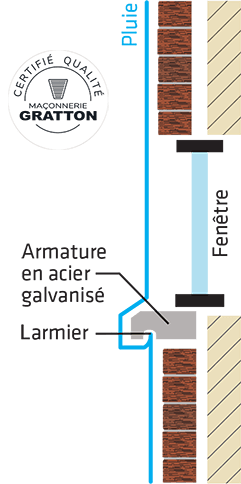CAUSES
The window sill role is to push water away from the wall. Over time, the sill becomes more porous and lets more and more water penetrate during bad weather.
Moisture is trapped, which causes rust to form on the steel rod, located inside the sill.
Rusty steel swells and creates pressure on the sill which then results in a crack in the latter.
CONSEQUENCES
When there is a shattering and crumbling of the surface of a sill or a crack, water seeps under the window, damaging the wall and the other windows on the lower floors.
SOLUTION
Replace the cracked sill with a new cement or natural stone sill, protruding 4 inches on each side and fitted with a drip tray.
TYPES OF SILLS
Cement: The cement sill with a galvanized frame has the advantage of being less expensive.
Natural stone: The natural stone sill has the advantage of being more solid and durable. It is possible to lengthen and reduce the thickness without the risk of cracking.






